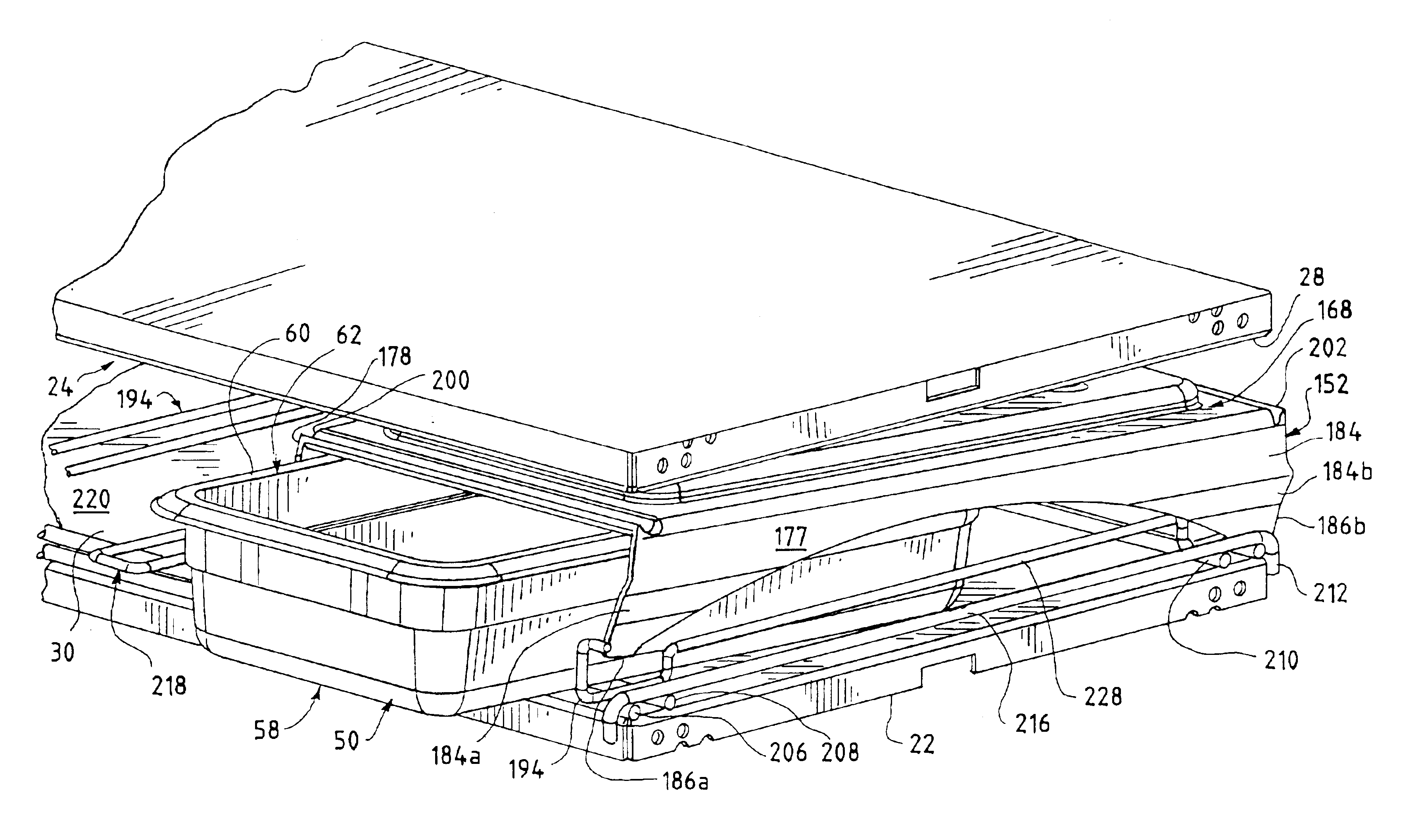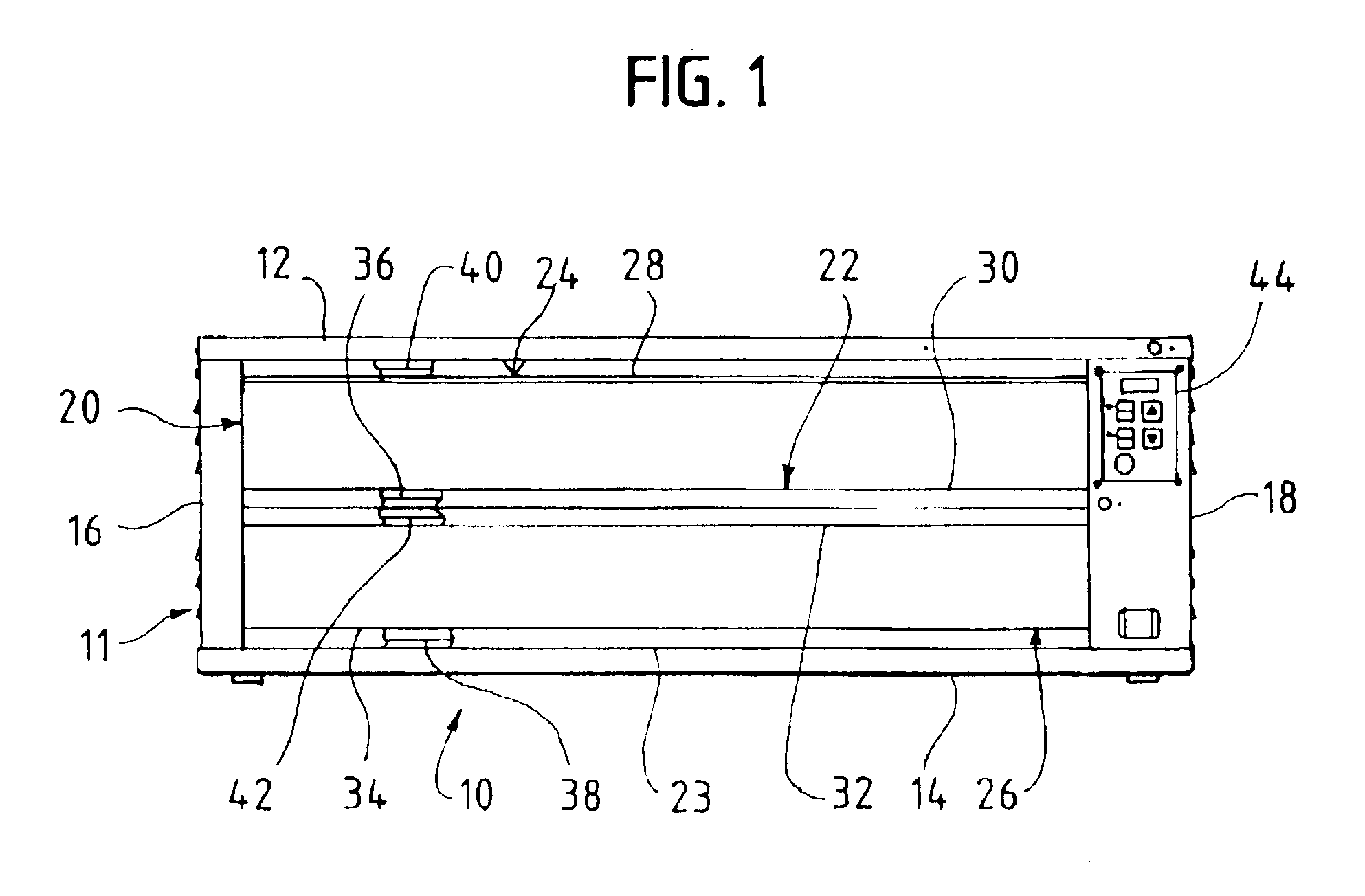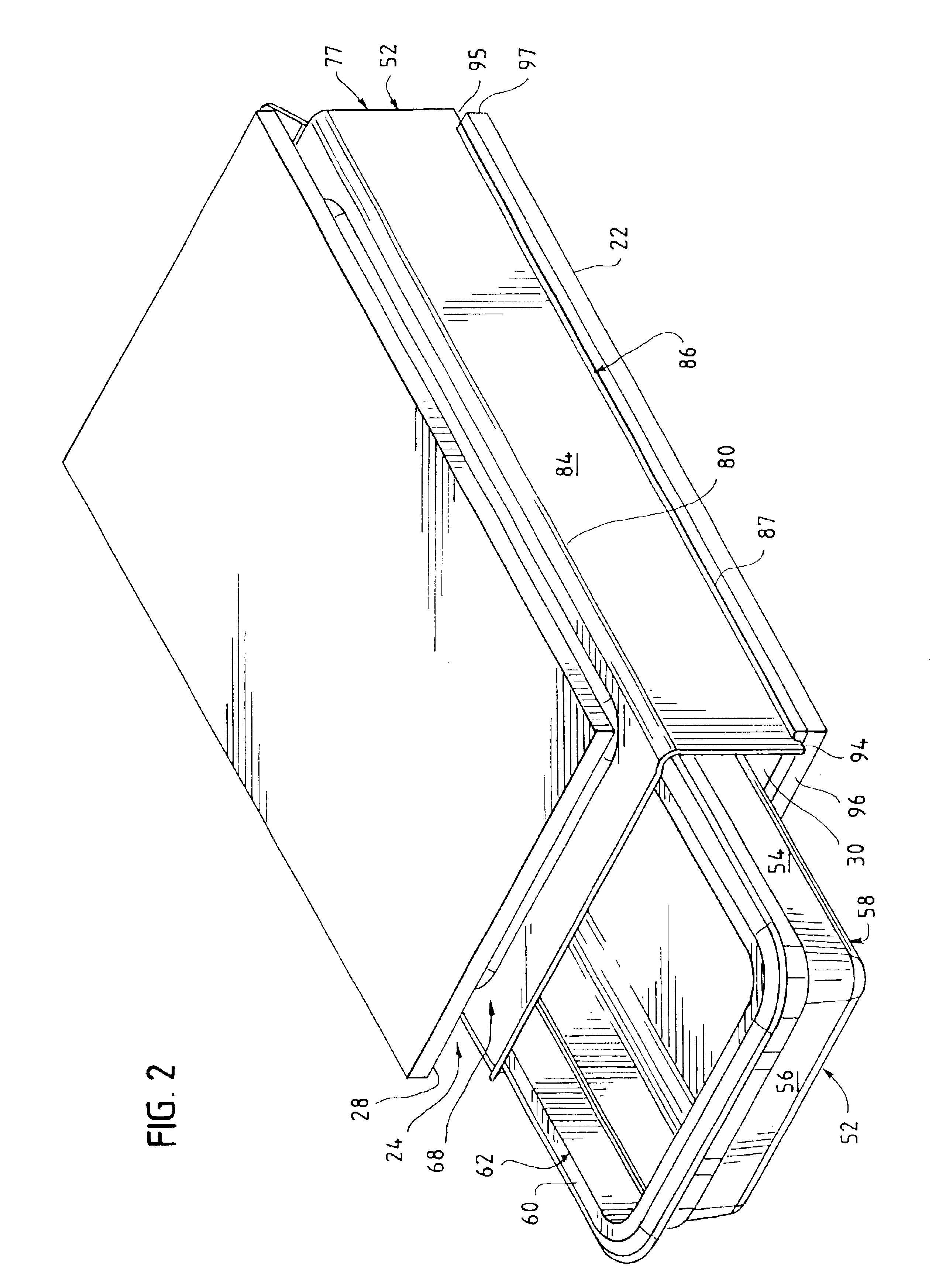Method for maintaining cooked food in a ready-to-serve condition using a freestanding cover for food trays
a freestanding cover and cooking technology, applied in the field of food preparation, can solve the problems of fried foods, eggs and hamburger patties that have a tendency to dry out undesirably, and other types of food items, such as fried foods, that have a tendency to become undesirably soggy
- Summary
- Abstract
- Description
- Claims
- Application Information
AI Technical Summary
Benefits of technology
Problems solved by technology
Method used
Image
Examples
Embodiment Construction
With reference to FIG. 1, a food warming cabinet 10 has a housing 11. Housing 11 has a top wall 12, a bottom wall 14, a left side wall 16, a right side wall 18, and an open front side 20. Preferably, housing 11 also has an open rear side 21, as shown in FIGS. 4 and 5. However, the rear side of housing 11 may also be closed.
A middle shelf 22 and a bottom shelf 23 are mounted in cabinet 10. Middle shelf 22 divides the space within cabinet 10 so as to define a first compartment 24 above it and a second compartment 26 below it. Although cabinet 10 is shown in FIG. 1 with two compartments for illustration, cabinet 10 can include a greater or fewer number of compartments. Shelves 22 and 23 are able to support one or more previously cooked food items or containers filled with previously cooked food items.
Preferably, shelves 22 and 23 are substantially imperforate, have substantially smooth and horizontal surfaces thereon, and extend from the left side to the right side of each compartment....
PUM
 Login to View More
Login to View More Abstract
Description
Claims
Application Information
 Login to View More
Login to View More - R&D
- Intellectual Property
- Life Sciences
- Materials
- Tech Scout
- Unparalleled Data Quality
- Higher Quality Content
- 60% Fewer Hallucinations
Browse by: Latest US Patents, China's latest patents, Technical Efficacy Thesaurus, Application Domain, Technology Topic, Popular Technical Reports.
© 2025 PatSnap. All rights reserved.Legal|Privacy policy|Modern Slavery Act Transparency Statement|Sitemap|About US| Contact US: help@patsnap.com



